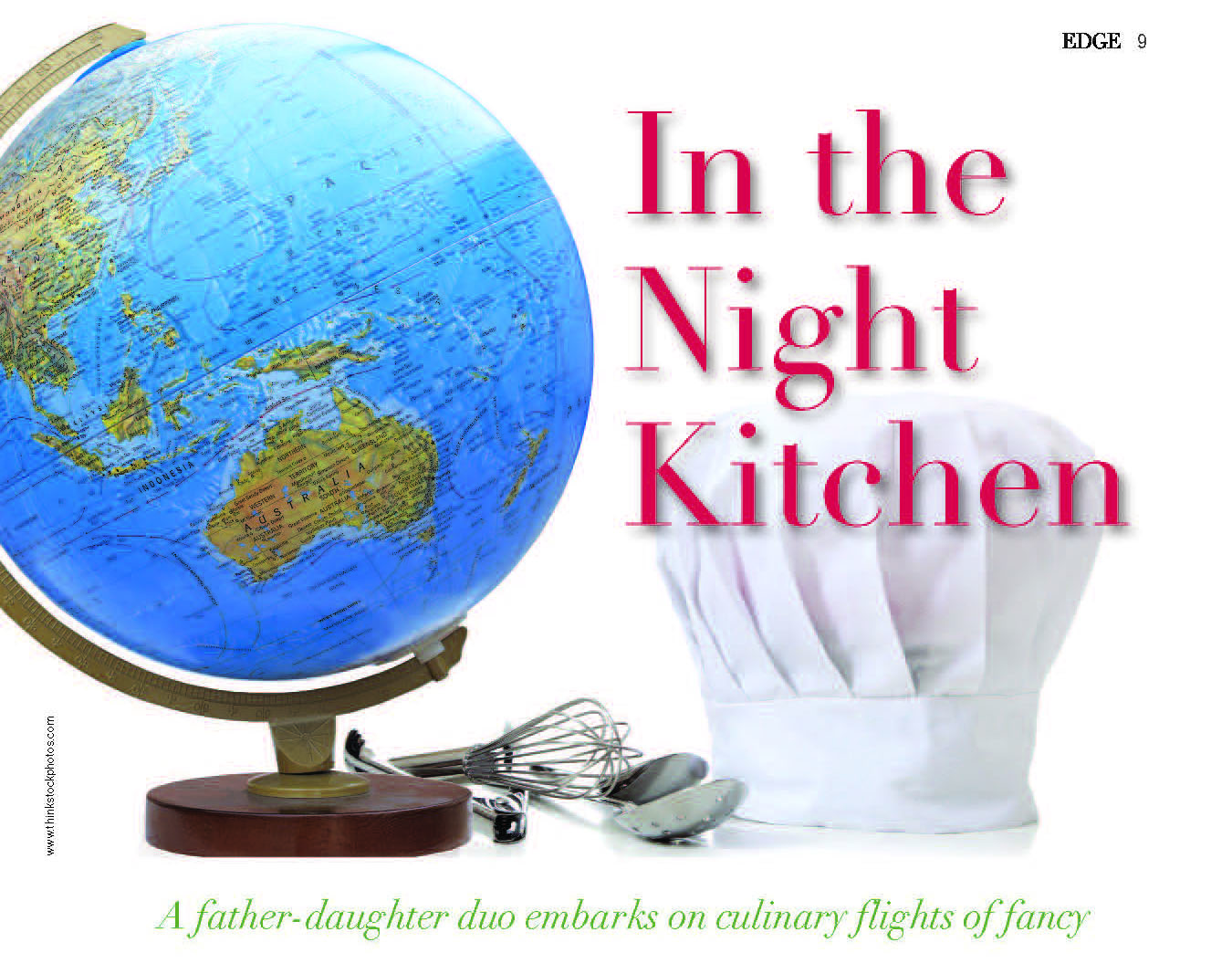Plates here arrive awash in subtlety, with sauces demure and focused, main elements expertly cooked, technically precise.

Photo credit: iStockphoto/Thinkstock

Photo credit: iStockphoto/Thinkstock
“Sam,” I say to my friend who is about to leave with his family on a trip abroad, “once upon a time in New Jersey, there wasn’t sushi on every corner or places nearby where you get tacos or tortas or other Mexican foods. There weren’t Thai restaurants. You know that, right?” Sam is 11 and, after hearing my spiel, puzzled. “Really, Andy?” he asks. “No California rolls?” I don’t want him to think I grew up deprived. But, compared to the variety of restaurant options we have today, the New Jersey I grew up in circa the 1960s and 1970s was, at best, limited. “When I was your age,” I tell Sam as we navigate the Garden State Parkway, “there was pizza and Chinese and that was about it for ethnic food.” I quickly realize I need to qualify Chinese. “I’m not talking Szechuan or soup dumplings or any of the things we eat now. Chinese was…well, Chinese was very different back then.” Which is why we are en route to Lun Wah, a classic in Roselle since 1974.
I wanted Sam to come back in time with me to a vintage New Jersey-style Cantonese/Polynesian restaurant, complete with tiki bar, waiters in Hawaiian-print shirts and a koi pond—a setting, a scene and a bill of fare almost extinct now in these parts. He’ll experience the most exotic foods of a generation past and realize what a treat it will be to have a chance to trek across the Atlantic to try a whole other new world of food. “Sam,” I continue as Steve Tyrell belts out Ain’t Misbehavin’ on my CD player, “you need to know how to take chances with new foods. You need to know how to order in a restaurant without falling back on the same-old, same-old stuff. You need to know this, Sam. You understand?” His response is barely audible, even though I’ve tamped down Tyrell. “Yeah,” he says. “When are we getting there?” We do get there, and settle into a bamboo-lined booth in one of two “palm”-tree lined dining spaces. Sam looks up at the fierce mask glaring down at us from its perch on the wall, then at me, unfazed. “How about Voodoo Steak?” I ask, and Sam laughs at the name. However, he’s appalled when I tell him we’re going to start with a pu-pu platter.” “Poo-poo? Oh, Andy, no!” Sam protests, until the platter arrives with a lazy-Susan arrangement of nibs and bits and a flaming mini-grill in the center.
Suddenly, Sam’s eyes glow. By the time we polish off our chunks of marinated beef, meaty hunks of ribs, shrimp toasts, packets of moist, spiced chicken and old-fashioned, pork-stuffed egg rolls, Sam is a big believer in the charms of Lun Wah’s superior pu-pu platter. Lun Wah is, after all, pure retro. As we spear cubes of beef, warming them for a minute on our grill, we see many diners file in. They’re all greeted by a veteran floor crew which seamlessly takes orders, delivers dishes and replenishes drinks served in pineapple shells trimmed with paper umbrellas and rimmed with plastic monkeys threatening to dive into the fruited spirits. By the time we’re served our resolutely Cantonese soups—a house wonton plumped not only with the steamed dough pouches filled with minced pork but also slices of chicken and roast pork, shrimp and crisp choy, and a thoroughly comforting chicken-corn that earned its moniker “velvet”—Sam’s ready to surrender to Lun Wah’s ways. “You can take the rest of the soup home,” I tell Sam, who is having a hard time saying goodbye to the kernels of corn and shreds of chicken swarming the not-too-thick soup base. This is a naturally thickened slow-cooked model, I suspect, for there is none of that cornstarch aftertaste that’s kept me from ordering the standard in many moons. Sam’s about to offer what I’m sure would’ve been a compelling argument for finishing every last drop of soup when our new best friend, Kenny—server sublime and master of Lun Wah ceremonies—arrives to see how we’re doing.
I take this as a cue our entrées are almost ready and, in turn, cue Sam to put down his spoon and prepare for more. “This place is the best, Andy,” Sam says, emphasizing the superlative with a slam-dunk imitation of one who has ingested a couple of Lun Wah’s Coco Locos, a concoction of rum and coconut milk. “What’s Volcano Steak?” Soon, he’s caught up on how he’ll describe to his family the multiple slabs of filet mignon set upon a thick layer of Chinese vegetables, all of which ring a tiny flame nestled in a citrus shell. Lun Wah doesn’t miss a chance to light a fire under, or for, its diners. But although there’s no shortage of ceremony and pomp, plates here arrive awash in subtlety, with sauces demure and focused, main elements expertly cooked, technically precise. The claypot subgum, a stew of myriad ingredients, illustrates that perfectly. There are chicken and shrimp, not a smidgen overcooked, shredded beef, muchos mushrooms and snow peas, broccoli and shards of more esoteric Asian vegetables in the heated pot. It’s bound by a light, sprightly sauce.
taste everything, individually. Nothing’s muddied. Grand Marnier shrimp, that luscious standard that at one time titillated, is textbook correct, with crunchy fried walnuts helping to offset the richness of the creamy, fruity sauce. Sam isn’t a shrimp fan (he’ll learn, he’ll learn), but he can’t get enough of that lush sauce, which he considers a kind of salad dressing for the thick slabs of cabbage and choy bedding the shrimp. We end as I always ended as a late-stage teen dining out with friends: with chocolate ice cream and chunks of pineapple.
On the way home, Sam, Lun-Wah-fortified, belts out his own personal rendition of “They All Laughed” and I don’t feel the need to reprise my beloved Steve Tyrell. But I do feel the need to reprise, for your sake, Lun Wah. So I return to check out several more classics that you might need to know about should you visit. Do you remember Happy Family? I remember Happy Family, and Lun Wah’s is a delirious version—the same that taught us about oyster sauce and how it relates to pork, shrimp, beef and chicken. Som Bo Duck is delicate and soothing, a splay of boneless duck breast amid chicken and shrimp, all atop a bevy of Asian vegetables. Coconut Shrimp never has been done as well in fusionfriendly New Age restaurants as it is here, with Lun Wah’s kitchen striking just the right balance of flakes to shellfish.
Just because we figured we should, we tried one of the handful of Szechuan selections, gingered beef that we asked to have kicked up to the max with hot sauce. The verdict? Gummy and one-dimensionally hot; no nuance, no finesse. Stick with Lun Wah’s core Cantonese/Polynesian dishes. Rather than doing dessert, use up your guilty-pleasure calorie allotment by starting your evening with one of the house-special drinks the folks gathering at the tiki bar so adore. Hawaiian Sunrise is a tart-tangy mix of lime juice and vodka. The Scorpion blends both light and dark rums with brandy, fruits and almond. Gin, lime juice and a liqueur (or two) we couldn’t divine and our server wouldn’t divulge make up the Bamboo Cooler. Lun Wah makes up in its warm wrap of nostalgia what it lacks in chic. There’s nothing new here. And there shouldn’t be. But when the call of the exotica of yore beckons, you’ll be glad to know it’s there, waiting for and welcoming baby boomers…and those whose generation has yet to be defined.
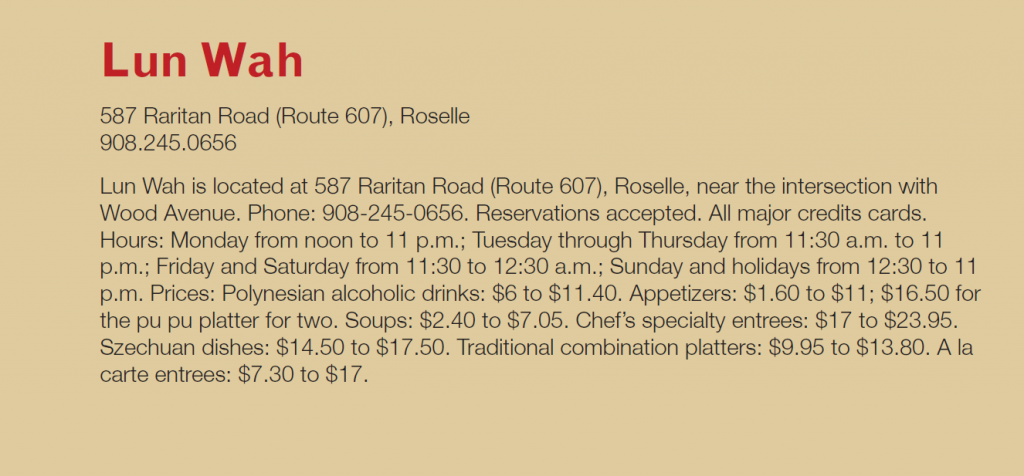

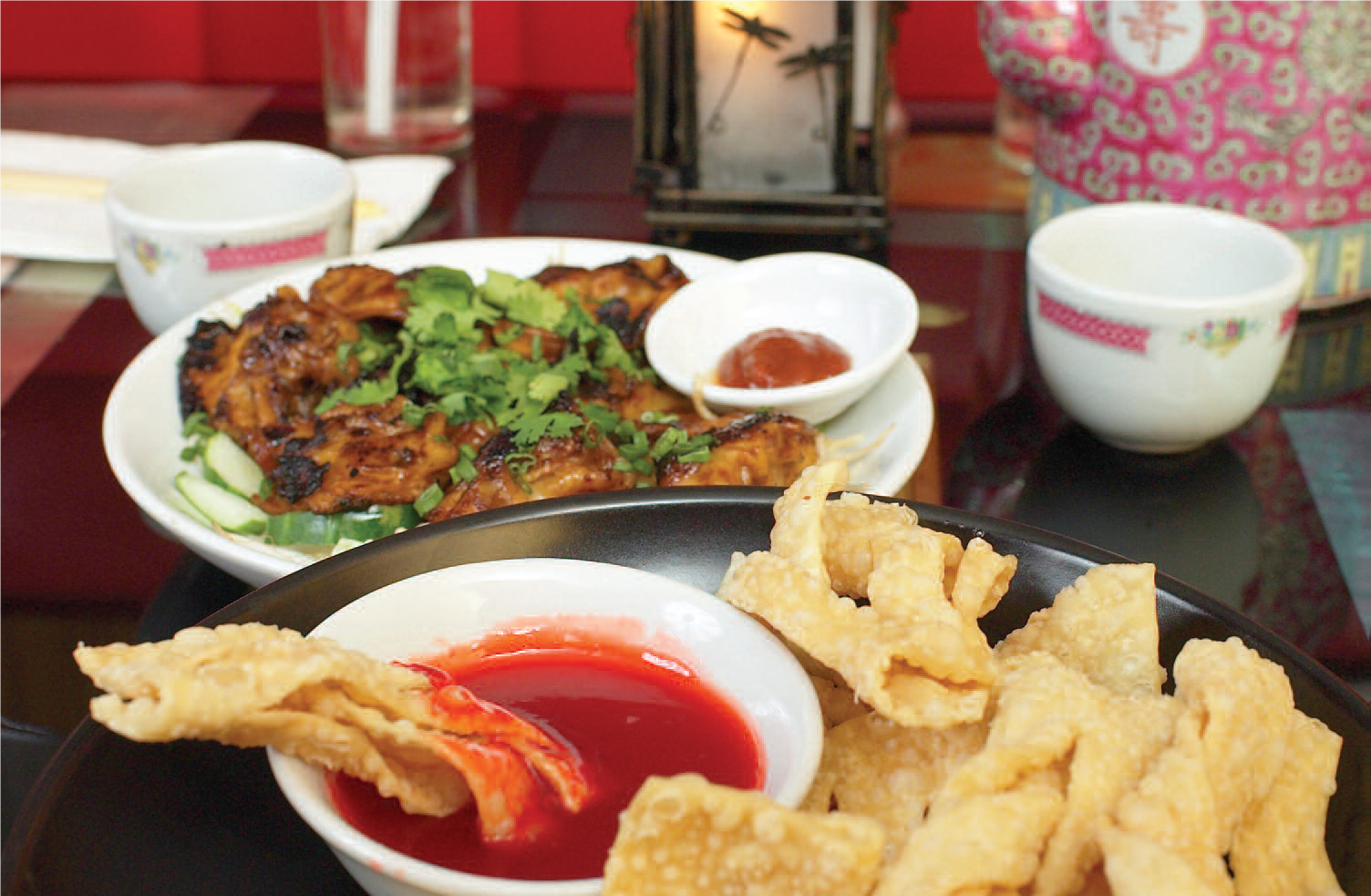
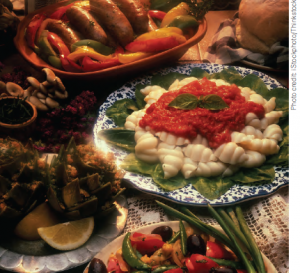 Frank, who legend has it wanted to be buried with a slice of owner Louise Esposito’s banana cream pie, who knew the secret behind the name of the world-renowned restaurant, and who just might be its unofficial mascot, invariably greets diners who descend into the basement and keeps crooning all night long. Those diners might be Jay-Z and Beyonce. They might be members of the cast of The Sopranos. They might be sports stars. They might be good old Jersey boy rock stars such as Jon Bon Jovi. You don’t believe these folks, plus heads of state and of Fortune 500 companies, hurdle the hoops of the reservation process to score a table in the cramped, cluttered, completely charismatic low-ceilinged, dimly lit dining spaces where vintage Italian nonna fare is served alongside a handful of improbable-sounding original Esposito dishes? They do.
Frank, who legend has it wanted to be buried with a slice of owner Louise Esposito’s banana cream pie, who knew the secret behind the name of the world-renowned restaurant, and who just might be its unofficial mascot, invariably greets diners who descend into the basement and keeps crooning all night long. Those diners might be Jay-Z and Beyonce. They might be members of the cast of The Sopranos. They might be sports stars. They might be good old Jersey boy rock stars such as Jon Bon Jovi. You don’t believe these folks, plus heads of state and of Fortune 500 companies, hurdle the hoops of the reservation process to score a table in the cramped, cluttered, completely charismatic low-ceilinged, dimly lit dining spaces where vintage Italian nonna fare is served alongside a handful of improbable-sounding original Esposito dishes? They do. didn’t fly in because even the leftovers couldn’t fit in an airplane’s overhead compartment, pasta awash in a “blush” sauce that combines ricotta and marinara, and Louise Esposito’s pies, each of which—and there are a good couple dozen—have their own ardent legions of fans. I’ll throw my support behind the coconut-pecan ricotta pie, but we’ll discuss later. First, the hype surrounding Chef Vola’s is exaggerated. Yes, the phone number remains unlisted in a phone-book sense of listing numbers. But you have it here and you can find it if you have basic-level Internet skills. Second, you can get a reservation. As with many extremely popular restaurants, you simply have to plan ahead, call ahead and not expect a table at 8 on a Saturday night.
didn’t fly in because even the leftovers couldn’t fit in an airplane’s overhead compartment, pasta awash in a “blush” sauce that combines ricotta and marinara, and Louise Esposito’s pies, each of which—and there are a good couple dozen—have their own ardent legions of fans. I’ll throw my support behind the coconut-pecan ricotta pie, but we’ll discuss later. First, the hype surrounding Chef Vola’s is exaggerated. Yes, the phone number remains unlisted in a phone-book sense of listing numbers. But you have it here and you can find it if you have basic-level Internet skills. Second, you can get a reservation. As with many extremely popular restaurants, you simply have to plan ahead, call ahead and not expect a table at 8 on a Saturday night.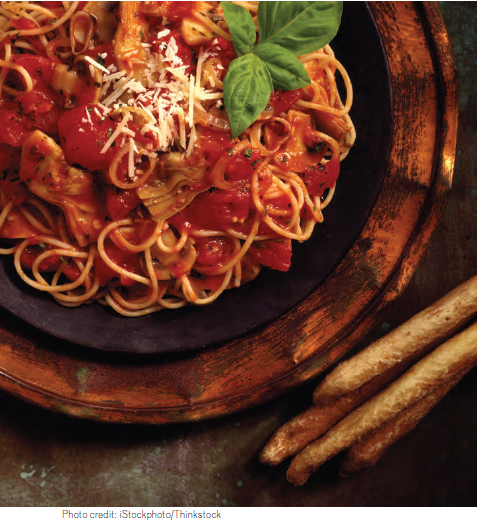
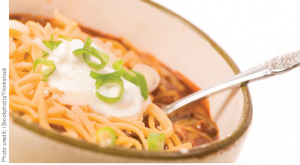

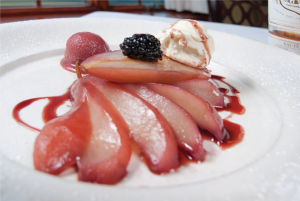 Mosaico. “A mosaic is made up of a thousand little details that are individually beautiful and of high quality,” says Carrera. “The artist assembles them to form a complete picture. We just reassembled some of the pieces.”
Mosaico. “A mosaic is made up of a thousand little details that are individually beautiful and of high quality,” says Carrera. “The artist assembles them to form a complete picture. We just reassembled some of the pieces.”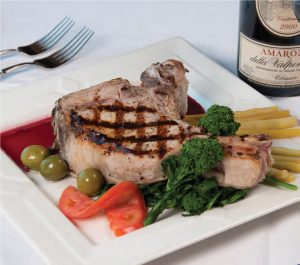 creation of chef Luis Romero (who has been cooking for Carrera and Dinic for more than a decade) is a scallopine layered with portabella mushrooms, roasted peppers and gorgonzola, in a brandy brown sauce, served with red potatoes on a bed of arugula. Another standout item is the French cut grilled pork chop. It has an entirely different thickness than what New Jersey restaurant-goers are probably used to. It’s never dry, even when ordered well done. Mosaico has also carved out a sterling reputation as a place to enjoy the bounty of the ocean. There are always at least two fish specials on the menu, even at lunch. Regulars swear by the crab cakes and, according to Carrera, the seafood salad rivals prosciutto and melon as their most popular appetizer. Grilled calamari is not on the menu, but is listed among the specials almost every day. Fish and shellfish are delivered each morning, so there’s an excellent chance that what comes to the table was swimming somewhere the previous day. The crowd at Mosaico is a mosaic in and of itself. At midday, four out of five tables appear to be business lunches. Some tables tear through their meals, while others linger well
creation of chef Luis Romero (who has been cooking for Carrera and Dinic for more than a decade) is a scallopine layered with portabella mushrooms, roasted peppers and gorgonzola, in a brandy brown sauce, served with red potatoes on a bed of arugula. Another standout item is the French cut grilled pork chop. It has an entirely different thickness than what New Jersey restaurant-goers are probably used to. It’s never dry, even when ordered well done. Mosaico has also carved out a sterling reputation as a place to enjoy the bounty of the ocean. There are always at least two fish specials on the menu, even at lunch. Regulars swear by the crab cakes and, according to Carrera, the seafood salad rivals prosciutto and melon as their most popular appetizer. Grilled calamari is not on the menu, but is listed among the specials almost every day. Fish and shellfish are delivered each morning, so there’s an excellent chance that what comes to the table was swimming somewhere the previous day. The crowd at Mosaico is a mosaic in and of itself. At midday, four out of five tables appear to be business lunches. Some tables tear through their meals, while others linger well 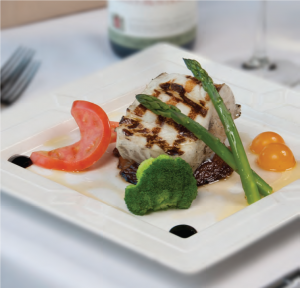 into the afternoon. In the evenings, it’s a blend of young and old, family dinners and romantic twosomes, and a fair number of business people.
into the afternoon. In the evenings, it’s a blend of young and old, family dinners and romantic twosomes, and a fair number of business people.
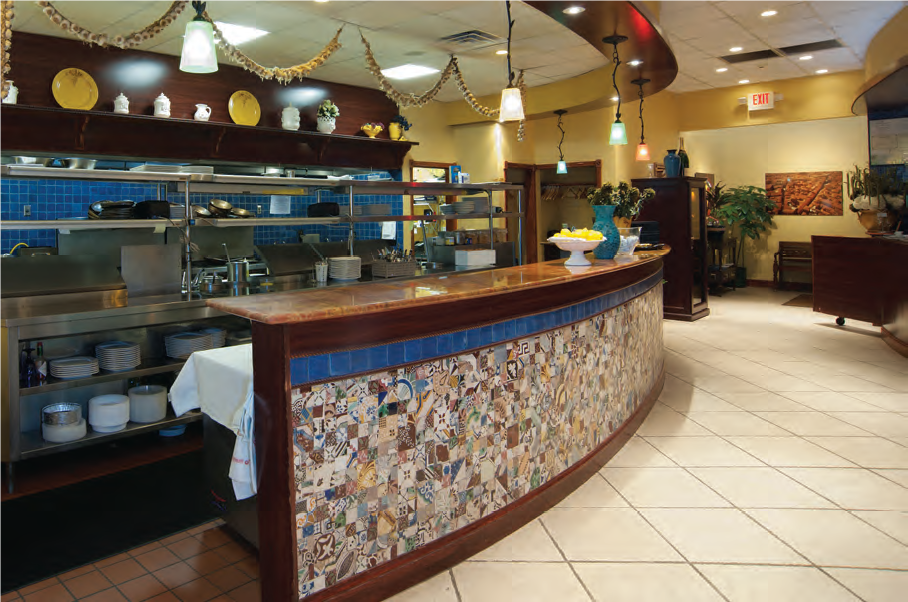



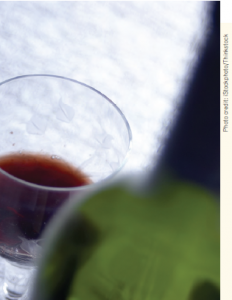 the service staff debated right in front of us which table got the plates they had in hand; politely trying to wrangle silverware as our food grew cold; and having to beg refills of our wine from a bottle set at a distance. The worst offenders? A couple of captains who openly complained about being short-staffed. None of that happened during a recent visit, when our meal’s delivery was well-orchestrated and servers attentive (if still prone to interrupting conversation with the always-awkward, “How is everything?”). The wine list has grown in scope and depth, the handiwork of sommelier Brooke Sabel. Though the by-the-glass program could offer more boutique selections, there’s a tie to the cuisine that shows thought. Clearly, Ninety Acres is in this game for the long haul.
the service staff debated right in front of us which table got the plates they had in hand; politely trying to wrangle silverware as our food grew cold; and having to beg refills of our wine from a bottle set at a distance. The worst offenders? A couple of captains who openly complained about being short-staffed. None of that happened during a recent visit, when our meal’s delivery was well-orchestrated and servers attentive (if still prone to interrupting conversation with the always-awkward, “How is everything?”). The wine list has grown in scope and depth, the handiwork of sommelier Brooke Sabel. Though the by-the-glass program could offer more boutique selections, there’s a tie to the cuisine that shows thought. Clearly, Ninety Acres is in this game for the long haul.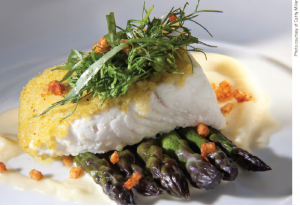
 horseradish. At a nearby table, a party of smartly dressed adults and children were doing Ninety Acres’ Saturday night special of prime rib, exchanging grins and wielding their steak knives with admirable skill. Food for thought. Finales here follow suit, meaning they are neither splashy nor curiosities, but takes on classic confections. My favorite was the mascarpone cheesecake that may have skirted pledges to seasonality with roasted pear and rosemary honey as accents, but charmed with pure deliciousness. The crust of the maple custard pie was short of perfectly flaky, but the tout to local eggs and the fledgling sugaring industry can’t be shortchanged. There’s also a chocolate torte paired with chocolate-jalapeno ice cream that shouldn’t put off anyone who fears the heat of chilies. It’s a barely-there presence, that jalapeno, making the dessert all about chocolate. Ninety Acres is all about the New Jersey the jokesters ignore—the New Jersey, mind you, we’re grateful they ignore. It’s been described by those who don’t live here as an oasis. But it’s not. Natirar and its restaurant reflect the well-mannered elegance of the Somerset Hills. It’s going to be a pleasure to watch Ninety Acres and its surrounding communities explore new culinary horizons together.
horseradish. At a nearby table, a party of smartly dressed adults and children were doing Ninety Acres’ Saturday night special of prime rib, exchanging grins and wielding their steak knives with admirable skill. Food for thought. Finales here follow suit, meaning they are neither splashy nor curiosities, but takes on classic confections. My favorite was the mascarpone cheesecake that may have skirted pledges to seasonality with roasted pear and rosemary honey as accents, but charmed with pure deliciousness. The crust of the maple custard pie was short of perfectly flaky, but the tout to local eggs and the fledgling sugaring industry can’t be shortchanged. There’s also a chocolate torte paired with chocolate-jalapeno ice cream that shouldn’t put off anyone who fears the heat of chilies. It’s a barely-there presence, that jalapeno, making the dessert all about chocolate. Ninety Acres is all about the New Jersey the jokesters ignore—the New Jersey, mind you, we’re grateful they ignore. It’s been described by those who don’t live here as an oasis. But it’s not. Natirar and its restaurant reflect the well-mannered elegance of the Somerset Hills. It’s going to be a pleasure to watch Ninety Acres and its surrounding communities explore new culinary horizons together.

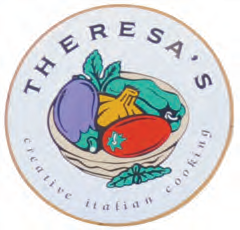 THERESA’S The always-smart partnership of shellfish and beans makes for a simple, yet engaging starter. Shrimp are marinated, then grilled, and plated with a white bean salad. The pair is united by a sweet flash of roasted red pepper and the herbal kick of a pesto-laced oil. Flashy and fussy? No. Soulful and satisfying? Yes. So is a local favorite pasta dish, the now-classic penne with vodka sauce. It’s so often tired and trite, laden with massive amounts of sauce that prompt giggles among teens, who think they’ll get a buzz from a sauce labeled “vodka.” Sorry. There’s a vaguely astringent quality to the spirited sauce, but what gives Theresa’s version of the dish a lift above the norm is the carbonara-like addition of crumbled pancetta and sweet peas. Potent in a non-alcoholic way. It’s possible that riots would ensue in genteel Westfield if the asiago-crusted chicken ever were taken off Theresa’s menu. Our polite server on this night said there was no chance of that. Folks love the cheese-on-cheese aspect of the dish, what with mozzarella layered in the mix. It’s all balanced by a dose of tomato and a garlicky cream sauce. If you’re looking for a sweet-tart sensation, give the balsamic-and apricot-glazed pork tenderloin a go. It’s got the appeal of something barbecued as well as a couple of hearty standbys on the side in garlic-licked mashed potatoes and a tangle of spinach. The dessert of choice? A dense, yet light, flourless chocolate cake that demands, and receives, a dollop of vanilla gelato.
THERESA’S The always-smart partnership of shellfish and beans makes for a simple, yet engaging starter. Shrimp are marinated, then grilled, and plated with a white bean salad. The pair is united by a sweet flash of roasted red pepper and the herbal kick of a pesto-laced oil. Flashy and fussy? No. Soulful and satisfying? Yes. So is a local favorite pasta dish, the now-classic penne with vodka sauce. It’s so often tired and trite, laden with massive amounts of sauce that prompt giggles among teens, who think they’ll get a buzz from a sauce labeled “vodka.” Sorry. There’s a vaguely astringent quality to the spirited sauce, but what gives Theresa’s version of the dish a lift above the norm is the carbonara-like addition of crumbled pancetta and sweet peas. Potent in a non-alcoholic way. It’s possible that riots would ensue in genteel Westfield if the asiago-crusted chicken ever were taken off Theresa’s menu. Our polite server on this night said there was no chance of that. Folks love the cheese-on-cheese aspect of the dish, what with mozzarella layered in the mix. It’s all balanced by a dose of tomato and a garlicky cream sauce. If you’re looking for a sweet-tart sensation, give the balsamic-and apricot-glazed pork tenderloin a go. It’s got the appeal of something barbecued as well as a couple of hearty standbys on the side in garlic-licked mashed potatoes and a tangle of spinach. The dessert of choice? A dense, yet light, flourless chocolate cake that demands, and receives, a dollop of vanilla gelato. 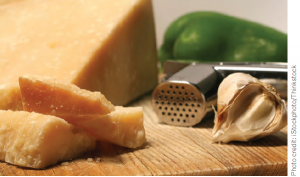
 MOJAVE GRILL There was a special soup on tap the night of our visit that intrigued: caramelized onion and potato, punctuated by the freshness of scallions and topped with crisped onions that have been shot through with cayenne. Of all the Scalera concepts, I’ve liked Mojave the best. There’s bolder seasoning and more of a distinctive personality on the plates, particularly on the specials’ roster. This soup crystallizes why?: The onion-potato soup is thick, rich and calls for counterpoint, which it gets in the rawness of the scallions and the heat of the crunchy cayenne’d onions. The signature black bean soup needs its jalapeno spike, as well as the luxurious lime crema, chunks of avocado and chopped, spiced tomato. Extra dimension in a dish
MOJAVE GRILL There was a special soup on tap the night of our visit that intrigued: caramelized onion and potato, punctuated by the freshness of scallions and topped with crisped onions that have been shot through with cayenne. Of all the Scalera concepts, I’ve liked Mojave the best. There’s bolder seasoning and more of a distinctive personality on the plates, particularly on the specials’ roster. This soup crystallizes why?: The onion-potato soup is thick, rich and calls for counterpoint, which it gets in the rawness of the scallions and the heat of the crunchy cayenne’d onions. The signature black bean soup needs its jalapeno spike, as well as the luxurious lime crema, chunks of avocado and chopped, spiced tomato. Extra dimension in a dish 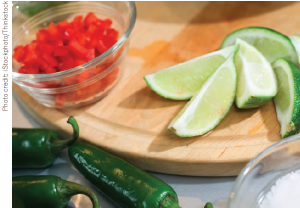 is why we eat out, so we can experience what we might not do for ourselves at home. We tend not to make tuna ceviche at home very often, either, which is why Mojave’s faithful snag the chunks of yellowfin made brazen by ginger and pasilla chilies and then soothed by cooling cucumbers and avocado. Tune into the pulled chicken enchiladas and, if you’re in the mood for comfort food, for the ancho mole, red rice and black beans with a swath of cotija cheese and sultry crema. They’re just about as harmonic as a chorus from The Mamas and The Papas. If you’re craving quesadillas, nab the blackened chicken number that comes cosseted with a Monterey Jack-esque cheese and a generous slather of avocado-basil aioli. I wasn’t taken with the yucca-crusted grouper, a nightly special, for the grouper was overcooked, the taste of the yucca not doing a thing for the fish, and the red pepper puree overwhelming. The one-two punch of seared flank steak topped with a vigorous chimichurri hit on all cylinders, though—and it just might make you whip up your own take on the parsley-garlic-hot pepper-vinegar sauce this summer when you’re grilling a flank steak in your backyard.
is why we eat out, so we can experience what we might not do for ourselves at home. We tend not to make tuna ceviche at home very often, either, which is why Mojave’s faithful snag the chunks of yellowfin made brazen by ginger and pasilla chilies and then soothed by cooling cucumbers and avocado. Tune into the pulled chicken enchiladas and, if you’re in the mood for comfort food, for the ancho mole, red rice and black beans with a swath of cotija cheese and sultry crema. They’re just about as harmonic as a chorus from The Mamas and The Papas. If you’re craving quesadillas, nab the blackened chicken number that comes cosseted with a Monterey Jack-esque cheese and a generous slather of avocado-basil aioli. I wasn’t taken with the yucca-crusted grouper, a nightly special, for the grouper was overcooked, the taste of the yucca not doing a thing for the fish, and the red pepper puree overwhelming. The one-two punch of seared flank steak topped with a vigorous chimichurri hit on all cylinders, though—and it just might make you whip up your own take on the parsley-garlic-hot pepper-vinegar sauce this summer when you’re grilling a flank steak in your backyard.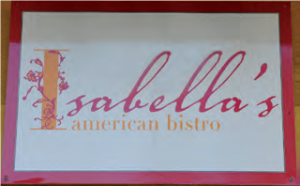 As I scooped up the last of the spiced walnuts in the orange-and-arugula salad at ISABELLA’S, I sensed an impatience on the part of my dining companion. It took no special powers of deduction for me to realize my pal wanted our bacon- Cheddar meatloaf now. It soon arrived and began to disappear. I managed to score two bites and reasonable enough spoonfuls of mashed potatoes and creamed spinach, both of which benefit from gravy chunky with shallots. You’d think meatloaf is only served in this country when the moon is full on a fourth Tuesday the way some people attack slices of the stuff. There’s no denying the appeal of Isabella’s meatloaf. (Which has a lot to do with an abundance of bacon, I suspect.) While the attack on the meatloaf was taking place, I took advantage of an uninterrupted spell communing with the night’s special ravioli: pasta pockets stuffed with goat cheese and roasted red peppers, then drizzled with a vibrant tomato-pesto sauce. There’s an accord reached on the fettuccine tossed
As I scooped up the last of the spiced walnuts in the orange-and-arugula salad at ISABELLA’S, I sensed an impatience on the part of my dining companion. It took no special powers of deduction for me to realize my pal wanted our bacon- Cheddar meatloaf now. It soon arrived and began to disappear. I managed to score two bites and reasonable enough spoonfuls of mashed potatoes and creamed spinach, both of which benefit from gravy chunky with shallots. You’d think meatloaf is only served in this country when the moon is full on a fourth Tuesday the way some people attack slices of the stuff. There’s no denying the appeal of Isabella’s meatloaf. (Which has a lot to do with an abundance of bacon, I suspect.) While the attack on the meatloaf was taking place, I took advantage of an uninterrupted spell communing with the night’s special ravioli: pasta pockets stuffed with goat cheese and roasted red peppers, then drizzled with a vibrant tomato-pesto sauce. There’s an accord reached on the fettuccine tossed 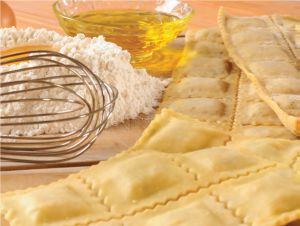 with baby shrimp, corn, sweet peas, sundried tomatoes and mushrooms, all of which is bound by a chipotle-charged cream sauce. This is vintage Scalera and what I think his restaurants do best: Take a bunch of familiar ingredients, a concept that’s not off-putting, then jazz it all up to the level of food you expect when you go out to eat. My wish for Isabella’s? That it would pair a cut of beef other than filet mignon with a crust of peppercorns. That intense coating would work much better with a chewier, heartier flavor, such as strip steak or rib-eye, than it does with a mildmannered filet. But all ends well here with a banana-studded bread pudding streaked with caramel and served with vanilla ice cream. It usually does at Westfield’s trio of winners. EDGE
with baby shrimp, corn, sweet peas, sundried tomatoes and mushrooms, all of which is bound by a chipotle-charged cream sauce. This is vintage Scalera and what I think his restaurants do best: Take a bunch of familiar ingredients, a concept that’s not off-putting, then jazz it all up to the level of food you expect when you go out to eat. My wish for Isabella’s? That it would pair a cut of beef other than filet mignon with a crust of peppercorns. That intense coating would work much better with a chewier, heartier flavor, such as strip steak or rib-eye, than it does with a mildmannered filet. But all ends well here with a banana-studded bread pudding streaked with caramel and served with vanilla ice cream. It usually does at Westfield’s trio of winners. EDGE  Editor’s Note: Andy Clurfield is a former editor of Zagat New Jersey. The longtime food critic for the Asbury Park Press also has been published in Gourmet, Saveur and Town & Country, and on epicurious.com.
Editor’s Note: Andy Clurfield is a former editor of Zagat New Jersey. The longtime food critic for the Asbury Park Press also has been published in Gourmet, Saveur and Town & Country, and on epicurious.com.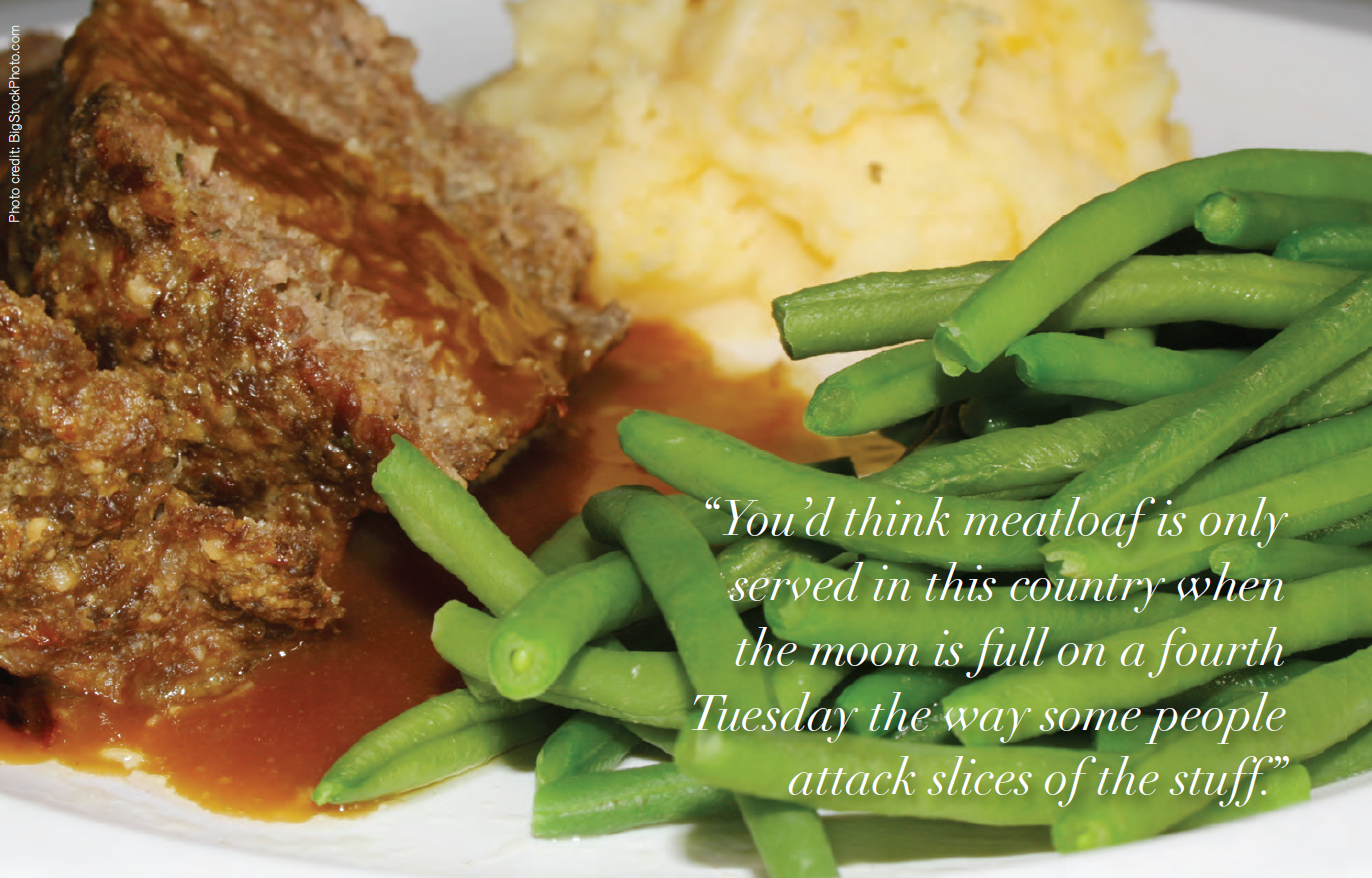

 er or Madonna.” No surname necessary. But no performer makes spicy mango chicken sausage or lamb-blue cheeserosemary sausage like Jabi and his crew. Jabi simply can’t stop creating. “We make at least one new sausage a week,” Jabi says as he packs up spicy Buffalo chicken sausages that deserve to be on Super Bowl watching menus everywhere, and ginger-chili bratwurst that takes the concept of fusion in new directions. My thoughts fly as I consider the more than 100 types of wursts, 20 kinds of kielbasa and tubs of prepared foods. Stuffed cabbage? Herring salad with beets? Time with Jabi is not for the faint of decision-making. Don’t leave without his spicy turkey sausages with chipotle and prunes. Cooked with cut-up root vegetables and diced tomatoes, they make for a dazzling Moroccan tagine, an exotic stew that can be served over rice, couscous or noodles. The myriad sausages also can be served simply in hot dog buns or hard rolls topped by a quick sauté of peppers and onions. A schmear of mustard is nice. But of the eight types I sampled, I have to say a Jabi creation needs no embellishment to be the star at your dinner.
er or Madonna.” No surname necessary. But no performer makes spicy mango chicken sausage or lamb-blue cheeserosemary sausage like Jabi and his crew. Jabi simply can’t stop creating. “We make at least one new sausage a week,” Jabi says as he packs up spicy Buffalo chicken sausages that deserve to be on Super Bowl watching menus everywhere, and ginger-chili bratwurst that takes the concept of fusion in new directions. My thoughts fly as I consider the more than 100 types of wursts, 20 kinds of kielbasa and tubs of prepared foods. Stuffed cabbage? Herring salad with beets? Time with Jabi is not for the faint of decision-making. Don’t leave without his spicy turkey sausages with chipotle and prunes. Cooked with cut-up root vegetables and diced tomatoes, they make for a dazzling Moroccan tagine, an exotic stew that can be served over rice, couscous or noodles. The myriad sausages also can be served simply in hot dog buns or hard rolls topped by a quick sauté of peppers and onions. A schmear of mustard is nice. But of the eight types I sampled, I have to say a Jabi creation needs no embellishment to be the star at your dinner. credit for introducing the masses to the delights of moussaka. Rifle through the freezers of local residents and you’ll find the Diamandases’ Greek meatballs waiting for that night when nothing else but a tangle of linguine topped with a few of those oregano-scented meat poufs will do. You also may find phyllo pies filled with spinach and cheese (aka spanokopita) and wedges of pastitsio, a lasagne-like casserole rich with eggy-creamy goodness. Don’t hesitate. Score some of these heat-and-eat entrees for tonight or for your next soirée. Then go to town with selections from The Greek Store’s olive bar and refrigerator case. Here all manner of dips in half-pound or full-pound sizes are sold. There are a good 30 different types of olives at the bar. There is no better way to launch a dinner party than by setting out a selection of Greek olives: Amfissa, the large and soft purplish-black variety from Delphi; Ionian, brine-cured green olives from the Peloponnesos; the traditional Kalamates, the fleshy favorite from Kalamata; Thassos, the oil-cured, dry type from the Aegean island of the same name. Partner these with one of the half-dozen varieties of feta, and lay all out with a spirited dip and pita chips. My personal favorite dip is the taramasalata, a decadent spread of fish roe and olive oil jazzed with nibs of shallots and herbs and a squeeze of lemon. Keep for yourself: a tub of tzatziki, the part-sauce, part-salad classic of sliced cucumbers rolling in thick Greek yogurt laced with mint and garlic. It’s restorative the morning after.
credit for introducing the masses to the delights of moussaka. Rifle through the freezers of local residents and you’ll find the Diamandases’ Greek meatballs waiting for that night when nothing else but a tangle of linguine topped with a few of those oregano-scented meat poufs will do. You also may find phyllo pies filled with spinach and cheese (aka spanokopita) and wedges of pastitsio, a lasagne-like casserole rich with eggy-creamy goodness. Don’t hesitate. Score some of these heat-and-eat entrees for tonight or for your next soirée. Then go to town with selections from The Greek Store’s olive bar and refrigerator case. Here all manner of dips in half-pound or full-pound sizes are sold. There are a good 30 different types of olives at the bar. There is no better way to launch a dinner party than by setting out a selection of Greek olives: Amfissa, the large and soft purplish-black variety from Delphi; Ionian, brine-cured green olives from the Peloponnesos; the traditional Kalamates, the fleshy favorite from Kalamata; Thassos, the oil-cured, dry type from the Aegean island of the same name. Partner these with one of the half-dozen varieties of feta, and lay all out with a spirited dip and pita chips. My personal favorite dip is the taramasalata, a decadent spread of fish roe and olive oil jazzed with nibs of shallots and herbs and a squeeze of lemon. Keep for yourself: a tub of tzatziki, the part-sauce, part-salad classic of sliced cucumbers rolling in thick Greek yogurt laced with mint and garlic. It’s restorative the morning after.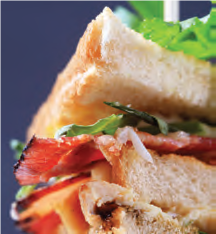 their kid’s First Communion or the folks’ 50th anniversary go for a personal bail-out. Sure, there’s a sizable sit-down space, and many do partake daily of the corner deli’s in-store hospitality. But what you need to know when you’re in a pinch for party-ready takeout is the name of Mr. J’s signature dish: Sloppy Joe. There are almost as many Sloppy Joes out there as there are fellows named Joe. But these piled-high sandwiches, here cut into quarters for easy at-home serving, are superior. Turkey and Swiss are layered with a snappy Russian dressing and extra-rich cole slaw on rye. There are combos renowned for their compatibility: chocolate and hazelnut, for instance, or smoked salmon and cream cheese. But turkey, Swiss, Russian and a phenomenal homemade cole slaw is sandwich nirvana. This winter, when you’re suffering from terminal envy of those vacationing on a sunny Caribbean island, lay out a spread of Mr. J’s Sloppy Joes with a side show of sausages doing a do-si-do with peppers. Home, sweet home.
their kid’s First Communion or the folks’ 50th anniversary go for a personal bail-out. Sure, there’s a sizable sit-down space, and many do partake daily of the corner deli’s in-store hospitality. But what you need to know when you’re in a pinch for party-ready takeout is the name of Mr. J’s signature dish: Sloppy Joe. There are almost as many Sloppy Joes out there as there are fellows named Joe. But these piled-high sandwiches, here cut into quarters for easy at-home serving, are superior. Turkey and Swiss are layered with a snappy Russian dressing and extra-rich cole slaw on rye. There are combos renowned for their compatibility: chocolate and hazelnut, for instance, or smoked salmon and cream cheese. But turkey, Swiss, Russian and a phenomenal homemade cole slaw is sandwich nirvana. This winter, when you’re suffering from terminal envy of those vacationing on a sunny Caribbean island, lay out a spread of Mr. J’s Sloppy Joes with a side show of sausages doing a do-si-do with peppers. Home, sweet home.

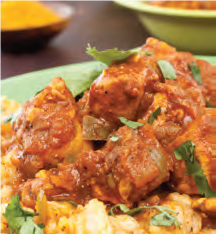
 seasonings don’t fight with the fishes; they complement. In the coconut milk-based soup tom-kha gai, chunks of chicken laze about the surprisingly light broth amid riffs of lemongrass and kaffir lime. In tom yum puk, a feisty little soup chunked with Asian vegetables and tofu, the lemongrass-lime component comes on stronger. As it should. We swooned over the Grand Palace Salad, a veritable party of grilled beef plied with onions and smacked with chilies and lime. There was no letdown with the nato-sad salad, a rather unusual toss of ginger-licked ground pork enlivened by onions and made elegant by the addition of cashews. I’m an easy mark for rice noodle dishes and my new favorite is Thailand Restaurant’s pad kee mna puk, a melange of those silky noodles, crispy fried tofu, egg, Thai basil and shards of vegetables. Sigh. I’ve got to learn to cook like this.
seasonings don’t fight with the fishes; they complement. In the coconut milk-based soup tom-kha gai, chunks of chicken laze about the surprisingly light broth amid riffs of lemongrass and kaffir lime. In tom yum puk, a feisty little soup chunked with Asian vegetables and tofu, the lemongrass-lime component comes on stronger. As it should. We swooned over the Grand Palace Salad, a veritable party of grilled beef plied with onions and smacked with chilies and lime. There was no letdown with the nato-sad salad, a rather unusual toss of ginger-licked ground pork enlivened by onions and made elegant by the addition of cashews. I’m an easy mark for rice noodle dishes and my new favorite is Thailand Restaurant’s pad kee mna puk, a melange of those silky noodles, crispy fried tofu, egg, Thai basil and shards of vegetables. Sigh. I’ve got to learn to cook like this.
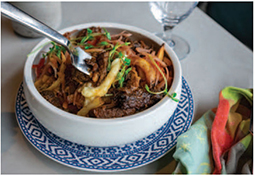 Grain & Cane Bar and Table • Brisket Poutine
Grain & Cane Bar and Table • Brisket Poutine The Thirsty Turtle • Pork Tenderloin Special
The Thirsty Turtle • Pork Tenderloin Special The Thirsty Turtle • Brownie Sundae
The Thirsty Turtle • Brownie Sundae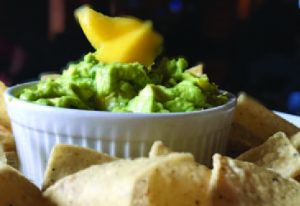 The Famished Frog • Mango Guac
The Famished Frog • Mango Guac Arirang Hibachi Steakhouse • Pork Belly Bao Buns
Arirang Hibachi Steakhouse • Pork Belly Bao Buns LongHorn Steakhouse • Outlaw Ribeye
LongHorn Steakhouse • Outlaw Ribeye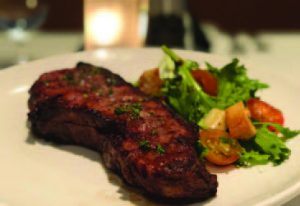 Ursino Steakhouse & Tavern • House Carved 16oz New York Strip Steak
Ursino Steakhouse & Tavern • House Carved 16oz New York Strip Steak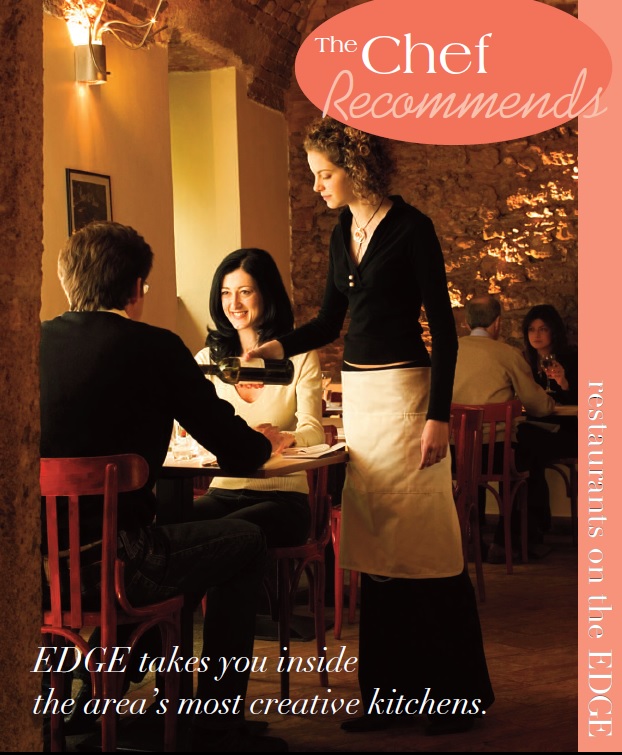









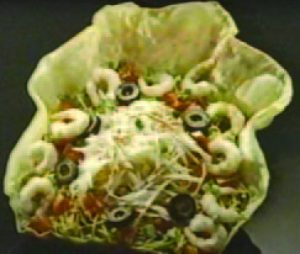











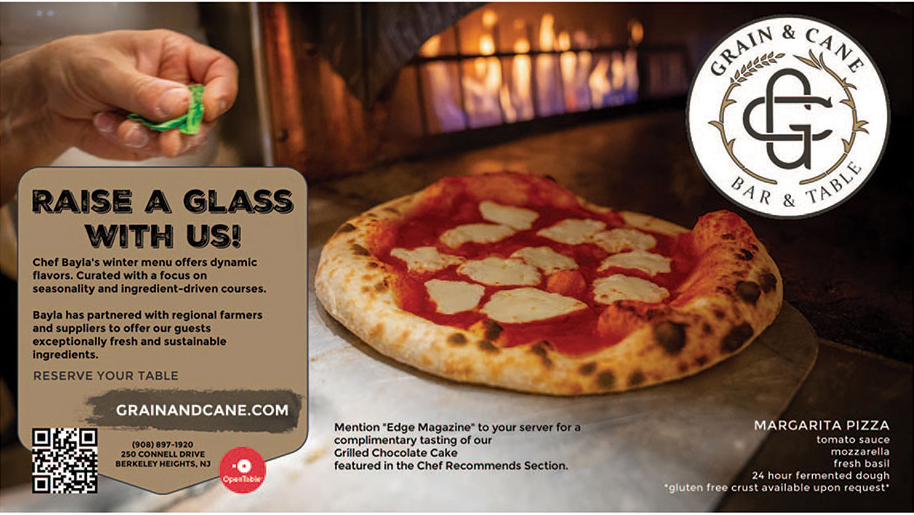
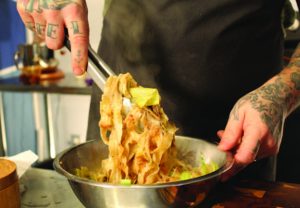
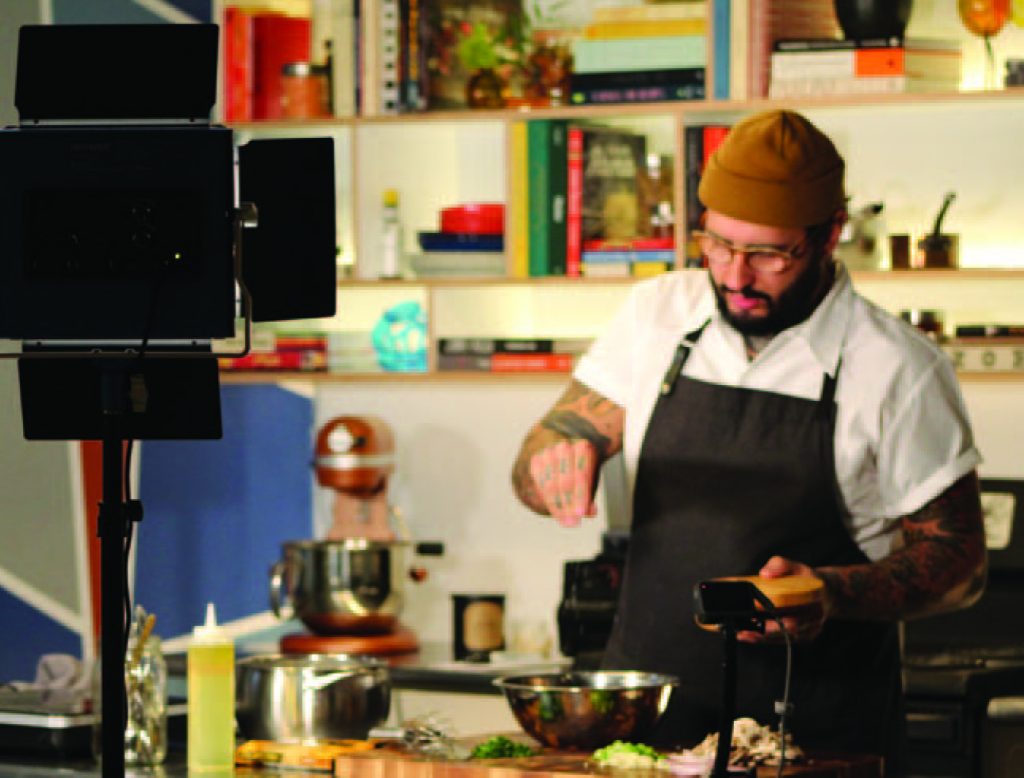



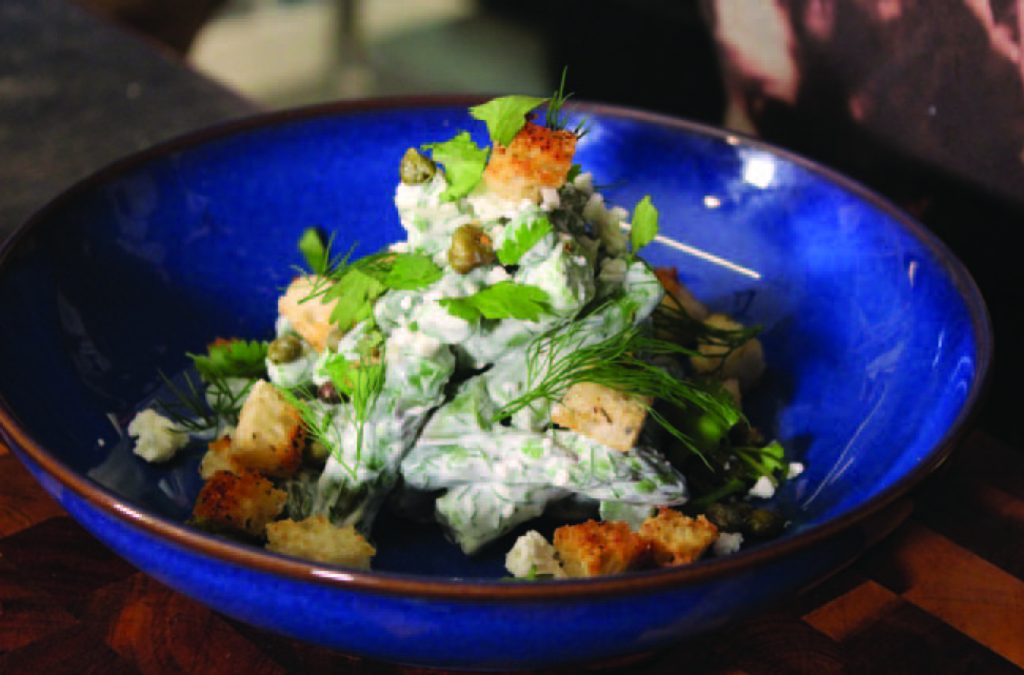
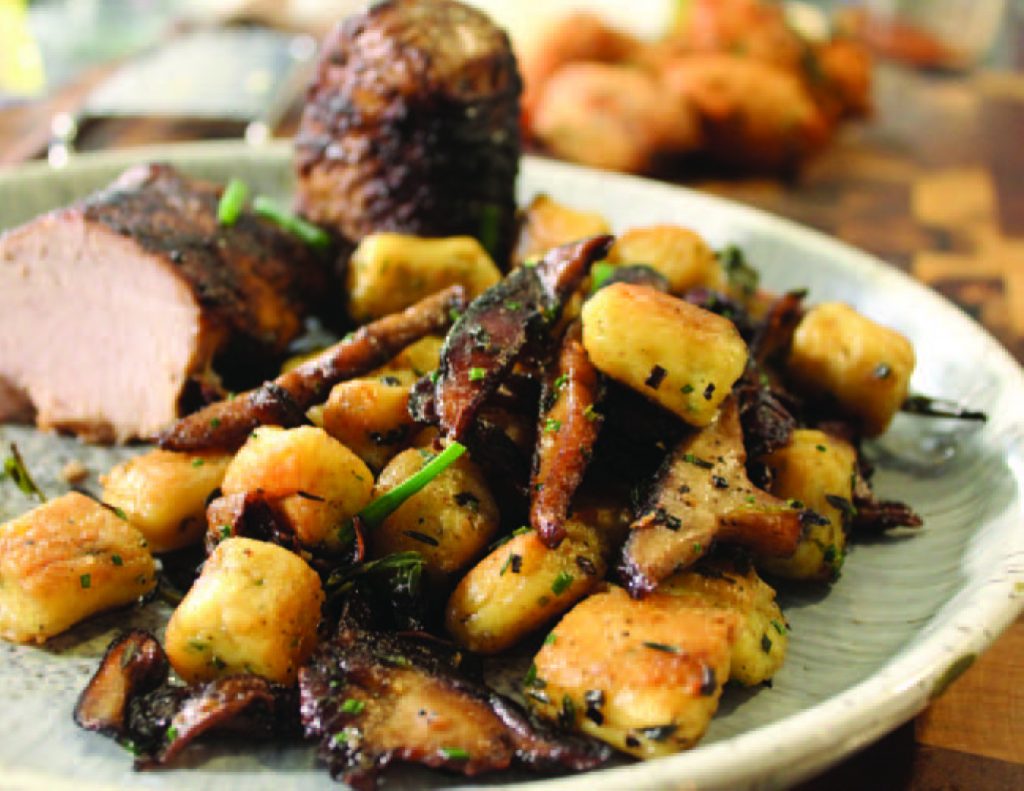
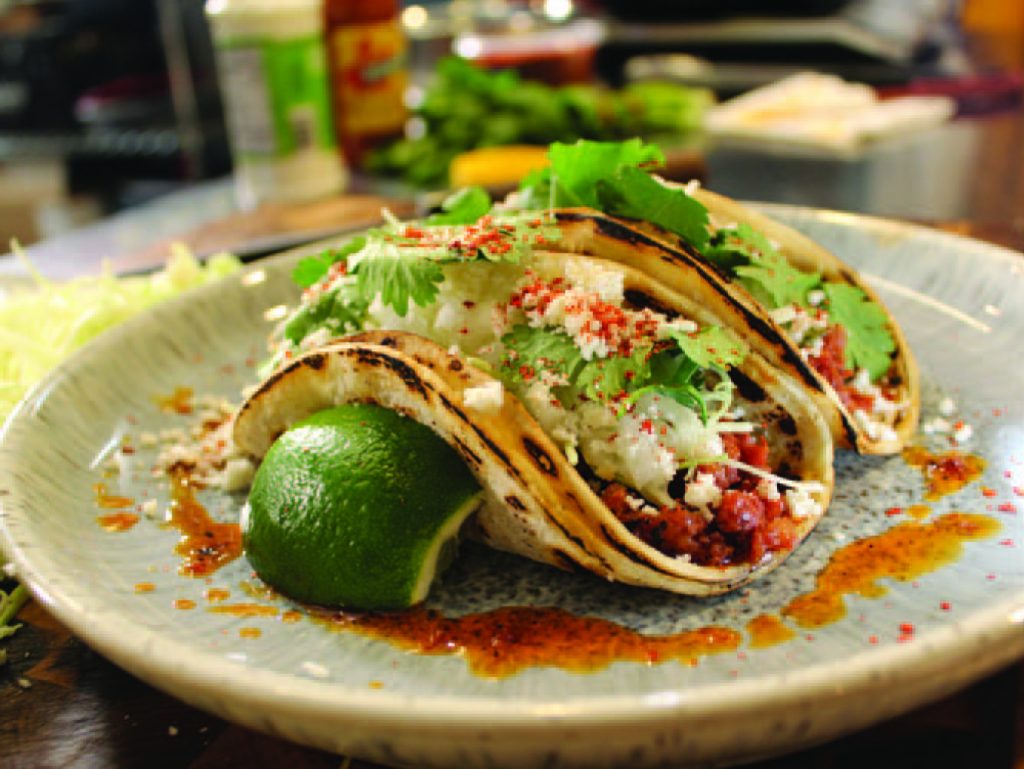




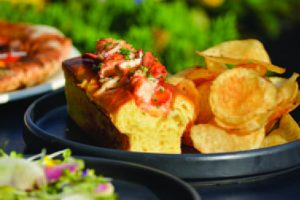 Grain & Cane Bar and Table • Lobster Roll
Grain & Cane Bar and Table • Lobster Roll Kimchi
Kimchi Mole
Mole Pad Thai
Pad Thai Ema Datshi
Ema Datshi Machboos
Machboos Pepperpot
Pepperpot outer boroughs (as well as northern New Jersey), so finding a good pepperpot isn’t as hard as you might think.
outer boroughs (as well as northern New Jersey), so finding a good pepperpot isn’t as hard as you might think.


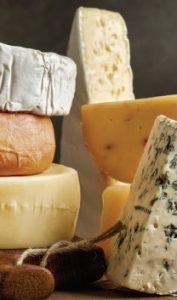 I’m not a highly curated, picture-perfect human. I’m a quirky, line-drawing, scribbles person. Also, I would operate at lightning speed if I could. Thankfully, I’ve found an antidote to this haste: fermentation. When things aren’t moving fast enough for me, fermentation reminds me of the value of waiting. Feeding my sourdough starter every morning, brewing a new batch of kombucha weekly…at the risk of sounding like an unhinged hipster, these are the routines that ground me. The practice of fermentation is as old as civilization itself, but the splendor of it found me in my early thirties while exploring cheese, wine, and bread in England, Italy and France.
I’m not a highly curated, picture-perfect human. I’m a quirky, line-drawing, scribbles person. Also, I would operate at lightning speed if I could. Thankfully, I’ve found an antidote to this haste: fermentation. When things aren’t moving fast enough for me, fermentation reminds me of the value of waiting. Feeding my sourdough starter every morning, brewing a new batch of kombucha weekly…at the risk of sounding like an unhinged hipster, these are the routines that ground me. The practice of fermentation is as old as civilization itself, but the splendor of it found me in my early thirties while exploring cheese, wine, and bread in England, Italy and France. ” However you say it, scones are an essential part of the afternoon-tea tradition (and also wonderful any time of day, in my opinion). Cranberries and blue cheese are a winning combination, and especially Christmasy. Another of my favorite variations is to swap out the cranberries for 2 tablespoons of coarsely chopped hazelnuts; if you do opt for the hazelnuts, try the scones with a smear of red onion and port marmalade or another fruity jam to bring the sweet kick.
” However you say it, scones are an essential part of the afternoon-tea tradition (and also wonderful any time of day, in my opinion). Cranberries and blue cheese are a winning combination, and especially Christmasy. Another of my favorite variations is to swap out the cranberries for 2 tablespoons of coarsely chopped hazelnuts; if you do opt for the hazelnuts, try the scones with a smear of red onion and port marmalade or another fruity jam to bring the sweet kick.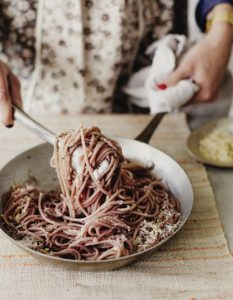

 When I started writing Cheese, Wine and Bread, I asked my mom where she initially got her challah recipe, and learned that “mom’s loaf ” has evolved over time. This current iteration, which she’s made consistently for over a decade, was adapted from a dinner roll recipe from a 1990s issue of Cooking Light.
When I started writing Cheese, Wine and Bread, I asked my mom where she initially got her challah recipe, and learned that “mom’s loaf ” has evolved over time. This current iteration, which she’s made consistently for over a decade, was adapted from a dinner roll recipe from a 1990s issue of Cooking Light. If fermentation is the preservation of food, those same principles of change and transformation must apply to us. We bring a bit of our past selves with us, and a hope for the future. When a new obstacle, opportunity, or question arises—as one always does—all we need to do is take a deep breath and let things ferment. Don’t overthink it. Just let it ferment.
If fermentation is the preservation of food, those same principles of change and transformation must apply to us. We bring a bit of our past selves with us, and a hope for the future. When a new obstacle, opportunity, or question arises—as one always does—all we need to do is take a deep breath and let things ferment. Don’t overthink it. Just let it ferment.
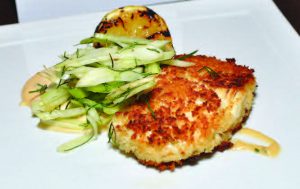
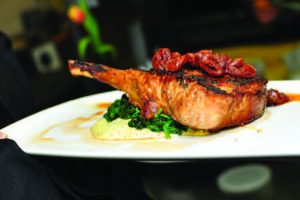



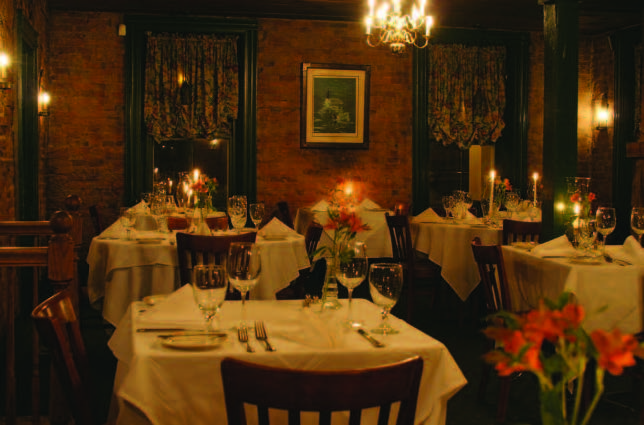

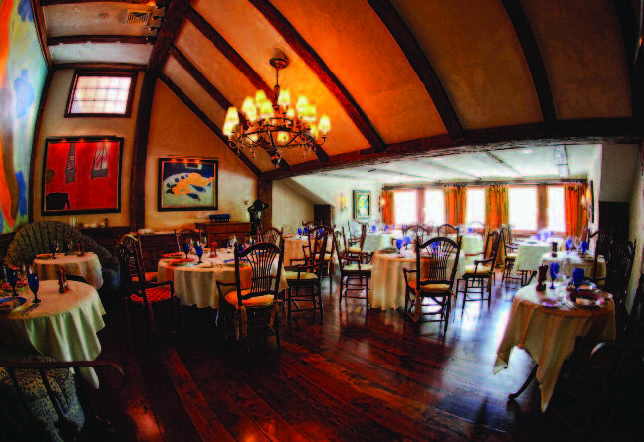 restrooms that don’t give the senses a break. That’s all deliberate, the brainchild of Seward Johnson, who, the year it opened, gave me a personal tour of Rat’s and the atelier he installed in the compound when I was on assignment for Town & Country magazine. Johnson was forward-thinking, connecting Rat’s (named after a loyal and hospitable character in the book The Wind in the Willows) to a farm at its birth, urging diners to tour the sculpture grounds before or after their meal, determined to make dinner an all-inclusive creative experience. The mission and the restaurant, reinforced today by the wide-ranging talents of chef Shane Cash in the kitch and the management of Philadelphia-based restaurateur Stephan Starr, never fail to warm my heart.
restrooms that don’t give the senses a break. That’s all deliberate, the brainchild of Seward Johnson, who, the year it opened, gave me a personal tour of Rat’s and the atelier he installed in the compound when I was on assignment for Town & Country magazine. Johnson was forward-thinking, connecting Rat’s (named after a loyal and hospitable character in the book The Wind in the Willows) to a farm at its birth, urging diners to tour the sculpture grounds before or after their meal, determined to make dinner an all-inclusive creative experience. The mission and the restaurant, reinforced today by the wide-ranging talents of chef Shane Cash in the kitch and the management of Philadelphia-based restaurateur Stephan Starr, never fail to warm my heart.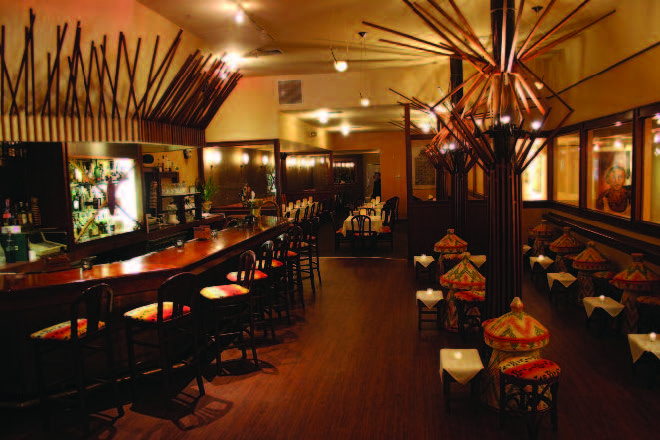 Makeda, the Ethiopian restaurant in New Brunswick, was back in its early days, when it was located in a smaller space and the dining was joyfully cheek-to-jowl. It’s long settled in its larger digs in the college town and its imprint on the community is profound: A dear pal who teaches at Rutgers tells me that it’s not only where she takes all out-of-town guests and celebrates birthdays and anniversaries, but the cuisine has influenced her home-cooking. “Makeda transports me every time I eat here,” this professor says. “It’s a vacation in a couple of hours.” I agree, and that’s why this downtown destination owned by Peter Meme and Stuart Smith, with peerless chef Aster Kassa, is always on my go-to list. Sometimes romance is less about where you are, physically, and more about where a restaurant’s food and attitude can take you, spiritually. When at Makeda, I get away in the best possible way.
Makeda, the Ethiopian restaurant in New Brunswick, was back in its early days, when it was located in a smaller space and the dining was joyfully cheek-to-jowl. It’s long settled in its larger digs in the college town and its imprint on the community is profound: A dear pal who teaches at Rutgers tells me that it’s not only where she takes all out-of-town guests and celebrates birthdays and anniversaries, but the cuisine has influenced her home-cooking. “Makeda transports me every time I eat here,” this professor says. “It’s a vacation in a couple of hours.” I agree, and that’s why this downtown destination owned by Peter Meme and Stuart Smith, with peerless chef Aster Kassa, is always on my go-to list. Sometimes romance is less about where you are, physically, and more about where a restaurant’s food and attitude can take you, spiritually. When at Makeda, I get away in the best possible way.
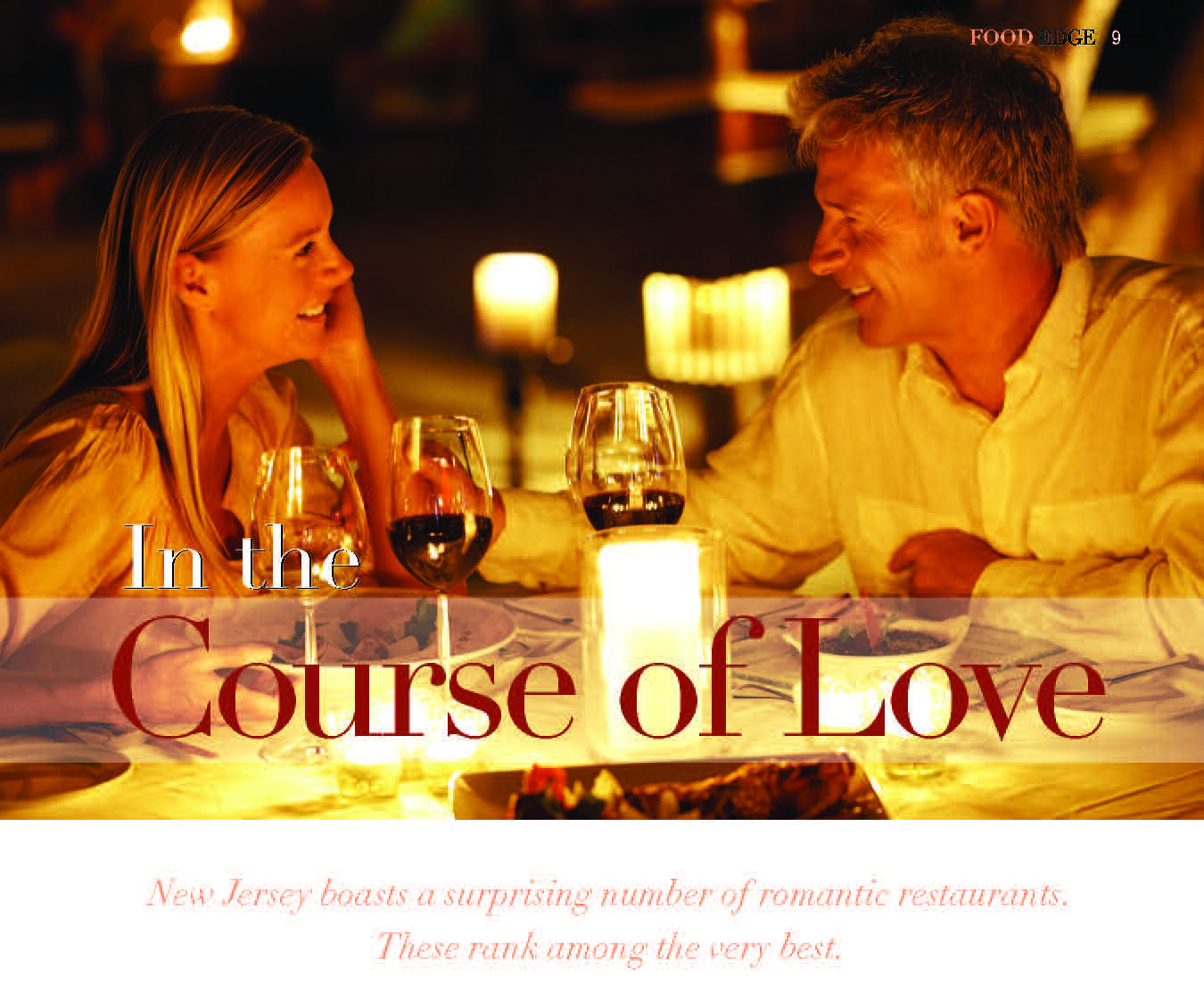
 desirable destinations in all of New Jersey; visually arresting, creatively energetic, spiritually satisfying. He convinces 20-something me.
desirable destinations in all of New Jersey; visually arresting, creatively energetic, spiritually satisfying. He convinces 20-something me.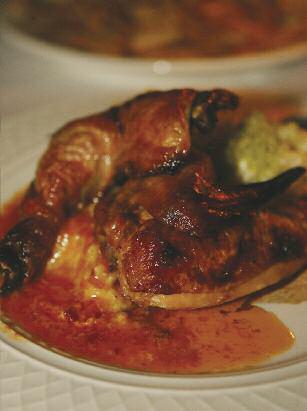 Chef Mark Miller fell into step with the distinctive Hamilton style several years ago when he took charge of the kitchen. The seamless transition means the romantic rusticity of the dining rooms can be appreciated without reservation. There’s the high-ceilinged, banqueted Gallery Room, along the canal; the twinkling-lights Garden Room; the private-for-a-party, mural-filled, post-and-beamed Delaware Room, warmed in winter by a Franklin fireplace; the airy and open Grill Room; and the intimate Bishops Room, with a framed mirror on the ceiling and angels painted on bead-board walls. In milder months, outdoor seating along the canal is the prime place to perch at Hamilton’s Grill Room, sipping wines you tote along and reveling in Jim Hamilton’s dreams come true…and food true to Hamilton’s roots as a home cook who believes in the integrity of basic Mediterranean food and using ingredients locally sourced.
Chef Mark Miller fell into step with the distinctive Hamilton style several years ago when he took charge of the kitchen. The seamless transition means the romantic rusticity of the dining rooms can be appreciated without reservation. There’s the high-ceilinged, banqueted Gallery Room, along the canal; the twinkling-lights Garden Room; the private-for-a-party, mural-filled, post-and-beamed Delaware Room, warmed in winter by a Franklin fireplace; the airy and open Grill Room; and the intimate Bishops Room, with a framed mirror on the ceiling and angels painted on bead-board walls. In milder months, outdoor seating along the canal is the prime place to perch at Hamilton’s Grill Room, sipping wines you tote along and reveling in Jim Hamilton’s dreams come true…and food true to Hamilton’s roots as a home cook who believes in the integrity of basic Mediterranean food and using ingredients locally sourced.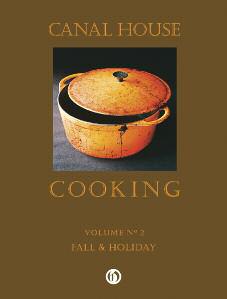 Cooking…By Design
Cooking…By Design

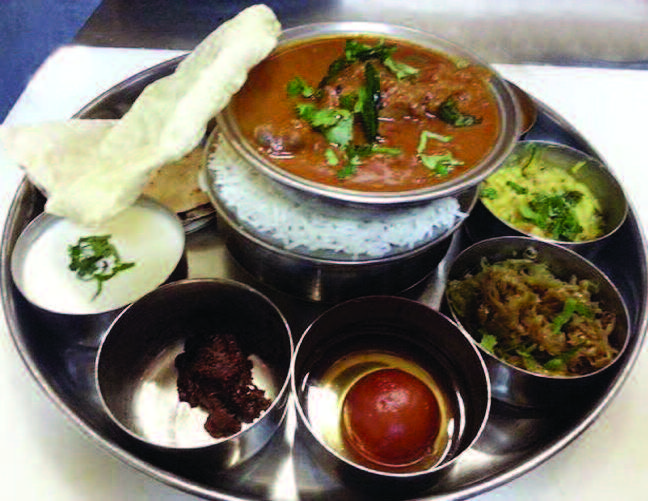 May took a liking to a playfully presented starter called chicken “lollypops.” Dusted in masala, it was a textbook example of how a classic spice mixture can energize a basic such as chicken.
May took a liking to a playfully presented starter called chicken “lollypops.” Dusted in masala, it was a textbook example of how a classic spice mixture can energize a basic such as chicken.
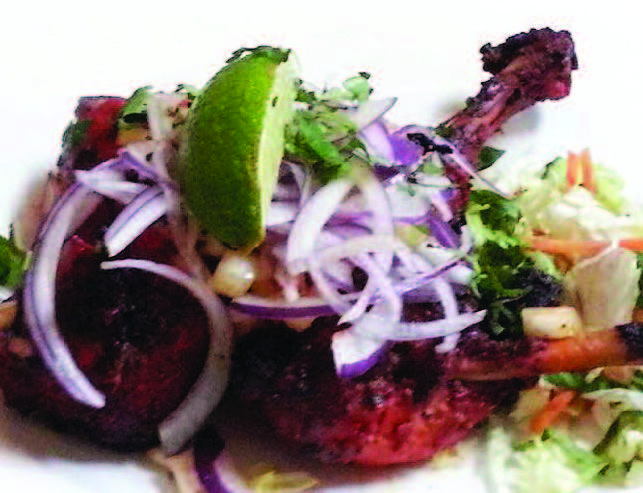

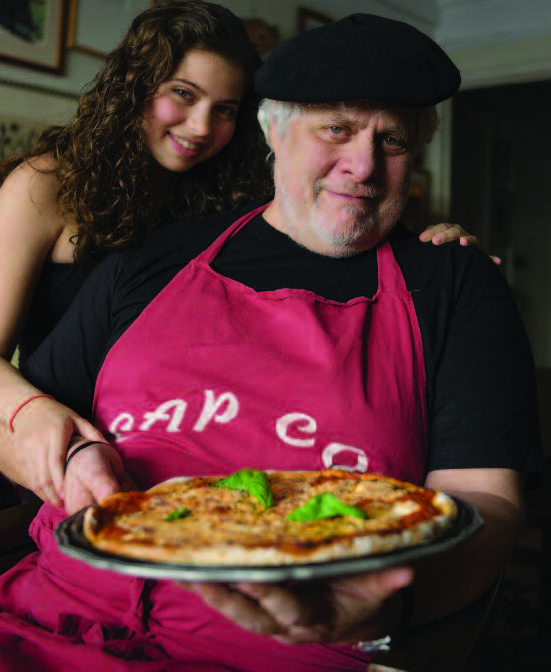
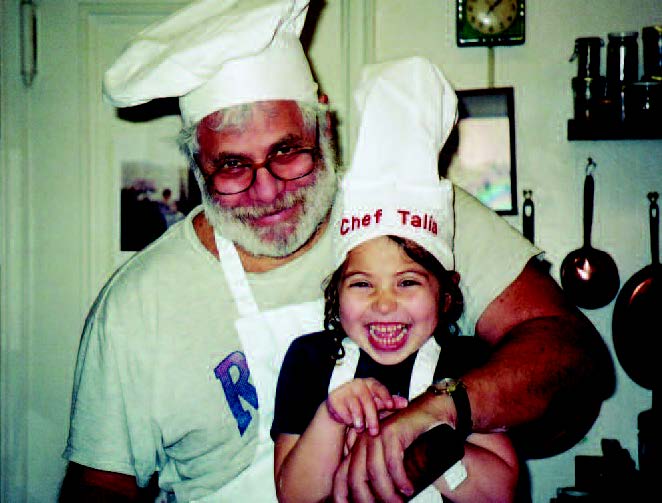
 RECIPE FILE: HARIRA* (a soup for Moroccan Night)
RECIPE FILE: HARIRA* (a soup for Moroccan Night)